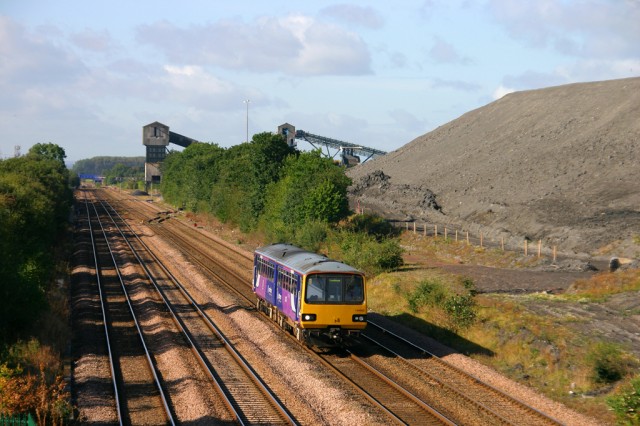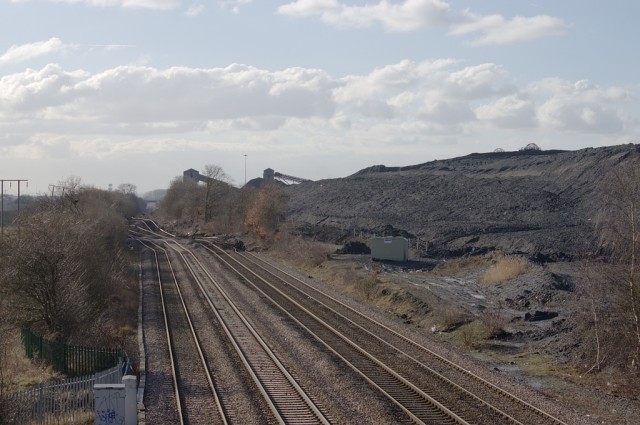19 February 2013
More images of the Hatfield Stainforth coal mine landslide
Posted by Dave Petley
Over the last few days a number of people have very kindly provided images of aspects of the Hatfield Stainforth coal mine landslide near to Doncaster in northern England. Before we get into that, a few people have asked about the nature of the mine – in this case the mine is an underground pit, with the coal and spoil being hoisted to the surface. The landslide has occurred on a heap of spoil from the mine workings.
So, on to the images. Let’s start with a couple of the site before the landslide occurred. Darren Hedges has provided this image of the site before the landslide – this was taken in September 2012, so probably represents the site in its pre-landslide state rather well:
A friend has very kindly provided these two images of the spoil heap. This one was taken in seven or so years ago from the top of the spoil looking down to the railway line, giving an impression of the site and the landfill beyond:
This image was taken on the tip looking towards the pit head, which gives an impression of the height and the slope angles involved:
Tim Prosser kindly took a couple of images of the landslide itself on Friday, which provide a benchmark for what has happened at the site since. This is a site overview, with the deformed tip on the right and side and the displaced railway lines on the left:
Zooming in, this is toe of the landslide:
Chris Street then visited the site at lunch time on Saturday. He collected this image from almost exactly the same point as Tim and Louise: .
.
The images are almost uncannily similar. The most important point though is that there is very little change in the intervening 24 hours, suggesting that this part of the landslide had almost stopped moving. Darren Hedges has also provided this image of the site as of yesterday (Monday), from a very slightly different perspective:
Again, there is no obvious change, suggesting that this portion of the landslide had not moved substantially over the last four days. You will see from the above image that the landslide has affected one of the pylons, which I highlighted as a risk in my post on Friday. Darren has also provided this image of the deformed pylon and the frontal zone of the landslide toe:
Of course this does not give an indication of what is happening at the top of the slope, but unfortunately no further aerial images have been released as far as I am aware. I suspect that the dry weather that we are currently enjoying will be helping with the management of the site – long may that continue.









 Dave Petley is the Vice-Chancellor of the University of Hull in the United Kingdom. His blog provides commentary and analysis of landslide events occurring worldwide, including the landslides themselves, latest research, and conferences and meetings.
Dave Petley is the Vice-Chancellor of the University of Hull in the United Kingdom. His blog provides commentary and analysis of landslide events occurring worldwide, including the landslides themselves, latest research, and conferences and meetings.